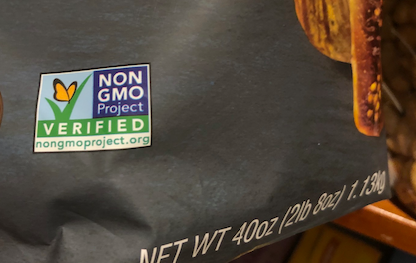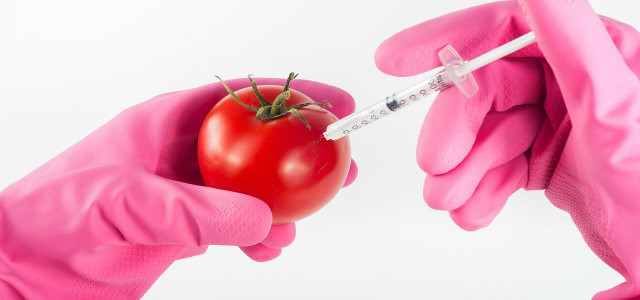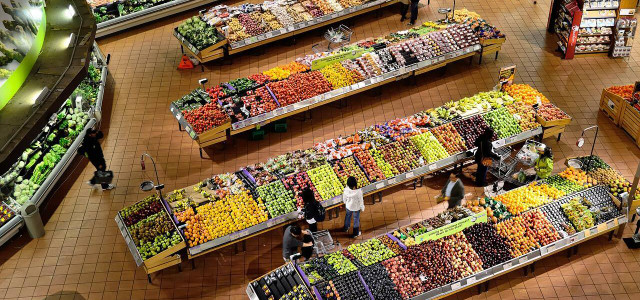Genetic modification of our foods is a technological process whose repercussions aren't quite clear yet. Read more to learn what exactly GMO and Non-GMO mean in food production.
GMO stands for ‘genetically modified organism.’ Using genetic engineering or transgenic technology, scientists alter DNA patterns of certain organisms, resulting in plants, foods and other organisms which are not seen in nature, and cannot be achieved through crossbreeding methods. This is genetic modification. It’s possible to genetically modify both plants and animals. However, while the animals are typically used for scientific research, genetically modified plants are seen in everyday supermarkets around the world. Many farmers prefer GMOs because they are easier to grow in larger quantities.
Some of the most common GM food products are corn, soy beans, canola, sugar beets, and potatoes. While you may not eat much of these products on their own, you’ll notice that they are commonly found in processed foods. In fact, 92 percent of corn is genetically modified, and much of it is turned into cornstarch, corn oil and corn syrup, which are common ingredients in any packaged food. Corn and soy, of which 94 percent is genetically modified, are mostly used in animal feed for livestock. However, soy is also found in many processed foods like cereals, vegan meats, granola bars, and more. Canola oil and sugar from sugar beets may be more common in your diet than you think as well.
Benefits of GMOs

(Foto: CC0 / Pixabay / Skitterphoto)
While to consumers GMOs may sound mainly like a threat to their health, for producers they have huge benefits. Many of those also translate into convenience for us: More food, that is bigger, more brightly-colored, tastes better or keeps longer, often also for a lower price. Here are the reasons GM is used for food products:
- Higher yields: genetically engineered seeds generally produce more food per acre.
- Longer lasting: foods can be genetically modified to have a longer shelf life, thereby resulting in less food waste.
- Pest and disease resistant: foods can be genetically altered to resist common diseases and pests, which contributes to the higher yield. This can benefit the environment, and reduce cost of crops as well, because farmers don’t need to use as many pesticides.
- Resistant to harsh climates: GM crops can grow more easily in extreme heat and drought, as well as as salty soils. This expands the possible farmland for food production, and helps solve the problem of farming with the effects of climate change.
- Herbicide resistant: GMOs can be made to be tolerant of herbicides which are used to control weeds. The use of herbicide then reduces the need to till the soil, therefore increasing soil health, decreasing soil erosion, and decreasing the need for fuel and labor.
- Increased crop quality: some foods are genetically modified to look prettier, and to have higher nutritional value. Foods like potatoes and apples, for example, are typically modified to resist browning. This makes them easier to transport, resulting in less food waste. Other crops, such as golden rice, have been modified to have an increased nutritional value, something advocates of GMOs have argued can help mitigate world hunger and malnutrition.
- Cheaper goods: the comparatively higher yields and ease of producing GMOs makes these foods more affordable for consumers. It also makes it easier for farmers to profit.
Potential Problems with GMOs



(Foto: CC0 / Pixabay / charlesricardo)
Despite the many benefits of GM crops, there reasons to be wary of them. Because the practice is still relatively new, there is little research which can demonstrate long-term health effects of consuming GMOs. The FDA states GMOs are safe to eat, and available research suggests this is true. However, the environmental impacts of genetically modified crops can be devastating.
- Allergic Reactions: because GMO products often involve the crossing of DNA of different organisms, this raises concerns over allergens. For example, if a person with a nut allergy consumes soy which was genetically modified with brazil nut genes, will they have an allergic reaction while unknowingly consuming a nut-influenced product? The answer is: possibly. So, it is possible for GMOs to cause allergic reactions. However, the World Health Organization reports that no allergic effects have been found in any genetically modified foods on the market.
- Antibacterial resistance in humans: some people are concerned that consuming antibacterial crops will modify human bodies to be resistant to antibiotics. However, the risk of this gene transfer is very low.
- Risk of outcrossing: outcrossing refers to the spread of GMO genes to conventional crops or to wild plants. The concern is that mixing natural crops with genetically modified seeds may affect food safety. While outcrossing is currently relatively low, even small amounts threaten wild species and organic farms.
- Environmental impacts: because GMOs are resistant to pests and herbicides, pests and weeds have evolved to become stronger over time, resulting in so-called ‘superweeds’ and ‘superpests,’ which cannot be killed by the pesticides developed so far. The increased use of herbicides on GMOs has also caused a loss of biodiversity. For example, herbicide usage on GM corn and soy has decimated much of the habitat of the monarch butterfly in North America. Chemicals in herbicides can also pollute the air and water.
Non-GMO Labels Explained



(Foto: Grace Henes / Utopia)
There are a variety of labels detailing GMO and non-GMO products you find at the grocery store. Some of these might state “not genetically modified” or “Non-GMO.” The problem here is that the company is self-disclosing details of their ingredients, rather than getting verified by a third party. Self-disclosure is not regulated, and therefore cannot be trusted. Many of these vague, unknown labels could just be marketing schemes. Instead, look out for the official labels certified organic, Non-GMO Project Verified and the bioengineered food label in order to understand what you’re consuming.
1. Certified organic foods are non-GMO
The easiest way to avoid GMOs is to eat certified organic foods. Organic foods are always 100 percent non-GMO. Stick to the organic, natural foods and try to only buy meat that’s been 100 percent organic fed or grass fed, when you do. You can get non-GMO eggs as well by purchasing from hens fed 100 percent organic feed. If you’re shopping on a budget, remember most produce is non-GMO already. Just avoid non-organic zucchini, summer squash, beets, corn, Hawaiian papaya, and radicchio, as these are very often genetically modified.
2. The Non-GMO Project Verified label
Other than purchasing all organic, you can stick to non-GMO products by looking out for the Non-GMO Project label. It says “NON GMO Project Verified” on it, along with a small picture of an orange butterfly. The Non-GMO Project is an independent non-profit organization which conducts third-party verification of non-GMO products. It’s a trusted organization aiming to provide consumers with transparency. You will find the label all over your local supermarket, on products ranging from cereals to cat litter.
3. The federal bioengineered food disclosure standard
Processed foods are more difficult. There are federal regulations for labeling GMO products, using the bioengineered food label, another term for GMO. However, not all products containing GMOs are required to disclose this. The bioengineered label covers only an official list of thirteen ingredients. Therefore, it’s best to look out for certain ingredients to avoid:
- Any processed food which contains sugar, fructose, dextrose, glucose, caramel color, mannitol, or maltodextrin is most likely derived from GMO corn or sugar beets.
- The same is true of soy and soy derivatives like soy protein, soy isolate and isoflavone. Tempeh and tofu can also be made of genetically modified soy. Learn how to make tempeh at home using organic soy if you want to avoid this.
- Other things to avoid are corn derivatives such as corn syrups and corn starch.
- Look out for dairy products which are not organic or grass-fed, as they may be or contain GMOs.
- Farm-raised seafood is often fed GMO meal.
Read more:
- Plastic-Free Shopping: 3 Easy Tips for Waste Reduction
- How to Make Homemade Weed Killer from Organic Ingredients
- Whole Foods Alternatives That Are Actually Affordable
Important Information regarding Health-related Topics.
** Links to retailers marked with ** or underlined orange are partially partner links: If you buy here, you actively support Utopia.org, because we will receive a small part of the sales proceeds. More info.Do you like this post?







